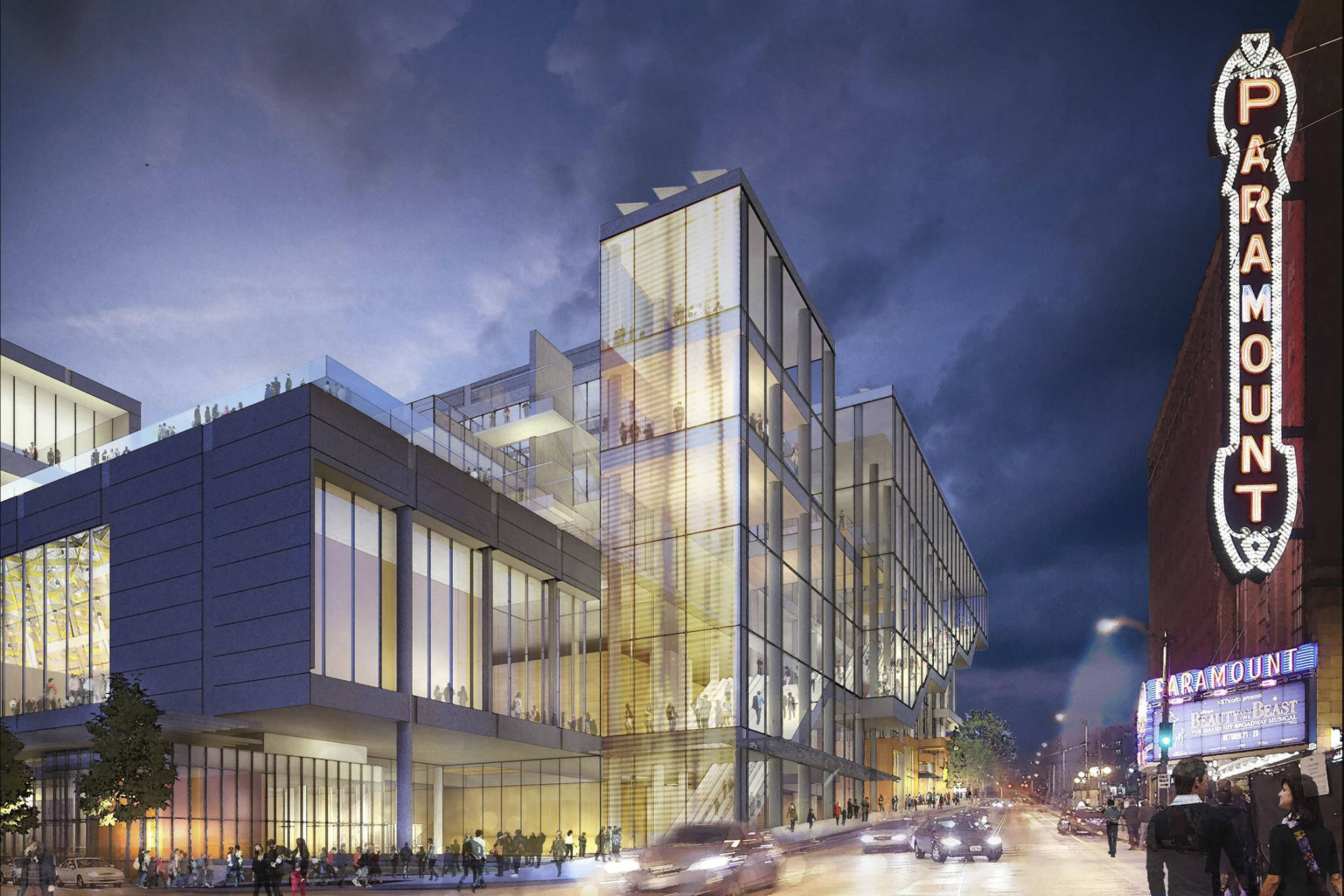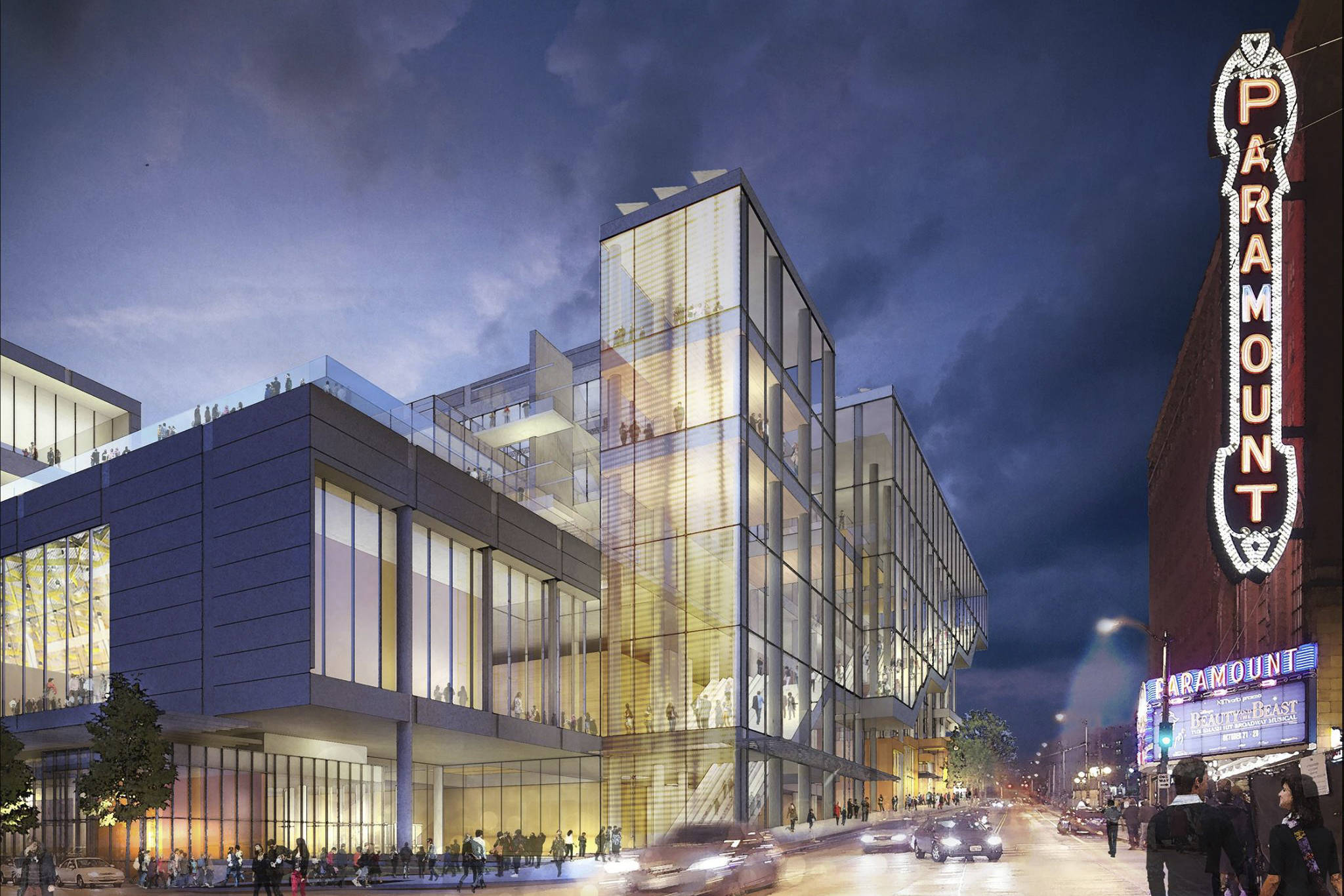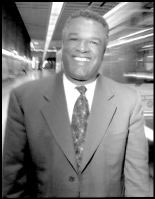THE OUTSIDER has become the top dog. Four years ago, Peter Steinbrueck stormed into office, promising to shake up a Seattle City Council that had become too cozy with downtown business. Last week, in a move that caught most observers by surprise, he was elected City Council president.
Council president is a post that is somewhere between significant and ceremonial. The president changes every two years and is elected by a majority vote of the council’s nine members. The president helps “set the [council’s] agenda, establish [the council’s] public persona, and influence the allocation of council staff and resources,” says HistoryLink.org’s Walt Crowley. So what happened? Did Steinbrueck change the council or did it change him? The short answer is, “Probably both,” says council member Nick Licata—Steinbrueck’s closest political ally.
The long answer is worth considering as well.
Elected the same year as Mayor Paul Schell, Steinbrueck became chair of the Housing Committee in a year during which the issue of affordable housing ruled supreme. He turned out to be a studious politician. He didn’t move a lot of legislation. A visit to his office often resulted in a wide-ranging discussion involving reams of studies, interesting tangents, provocative insights, and deep ambivalence as he struggled with his often conflicting ideals of preventing regional sprawl through encouraging development in Seattle and preserving the city’s existing cheap housing. His relationships with housing’s various constituencies— landlords, neighborhood preservationists, tenant organizers, homeless advocates, and the Seattle Housing Authority (SHA)—went up and down and all around.
He also brought a street fighter’s style to the council. He favored fierce, public debates while the council had grown accustomed to making quiet deals behind closed doors. Some of his colleagues accused him of grandstanding.
Two years after his election, he was joined on the council by someone who made him seem more moderate in terms of housing policy and political style—mouthy renters’ rights champion Judy Nicastro.
This year, he successfully negotiated two important, difficult agreements that drew broad council support. The first was about the transformation of SHA’s Rainier Vista housing project into a mixed-income community. The second was a settlement with activists who had successfully put Initiative 71 on the ballot, aiming for increased funding for homeless shelters. Both of these agreements required Steinbrueck to assume the role of mediator for members of the council and the community at large.
He was, therefore, well positioned to become the compromise candidate after neither council member Jim Compton nor council member Richard Conlin could nail down five votes to become president.
Steinbrueck says ideology was one, but by no means the dominant, reason that his colleagues supported him for the presidency. Other important factors, he claims, were his good personal relations with the other council members and an ability to deliver a set of committee assignments to the majority’s liking.
Five members of the council have chaired their committees for four years, so, according to council custom, it’s time for them to switch. There is always jockeying for preferred committee assignments. Steinbrueck’s new lineup is as follows:
*Housing, Human Services, and Community Development: Richard McIver. Before his election, McIver worked in nonprofit housing and community development for years. His low-key approach will not make nearly as many waves as Steinbrueck did in this position.
*Transportation: Richard Conlin. A light-rail supporter, Conlin wants to get Sound Transit to Northgate as soon as possible. He favors an “integrated” approach that links transportation closely to land use and economic development.
*Parks, Education, and Libraries: Steinbrueck. Usually the council president is busy enough with administration and other duties that his or her committee workload is relatively light.
*Neighborhoods, Arts, Information Technology, and Civil Rights: Nick Licata. While Licata thinks the breadth of his committee is an advantage, he was once again frozen out from more powerful committee chairs—Transportation or Budget—that he aspired to.
Margaret Pageler will continue chairing Seattle Public Utilities (water and trash), even though she’s also held her spot for four years. The utilities czar ain’t moving but hunkering down for an extended turf war with the new mayor and his King County cronies over control of Seattle’s water. The council’s other four committees will also keep their current chairs.
This lineup, like Steinbrueck’s presidency, is not likely to produce dramatic change. Instead, Steinbrueck’s top priority is addressing the council’s poor public image. He feels that the council has allowed the media to depict the institution in a “degrading and disparaging way” through an overemphasis on minor things like the infamous resolution to tear down the Columbia River dams. He plans to “rein in” his colleagues and discourage them from attacking each other or the new mayor in the press. “It’s an opportunity to set a new tone,” he says.
We’ll all be listening.








